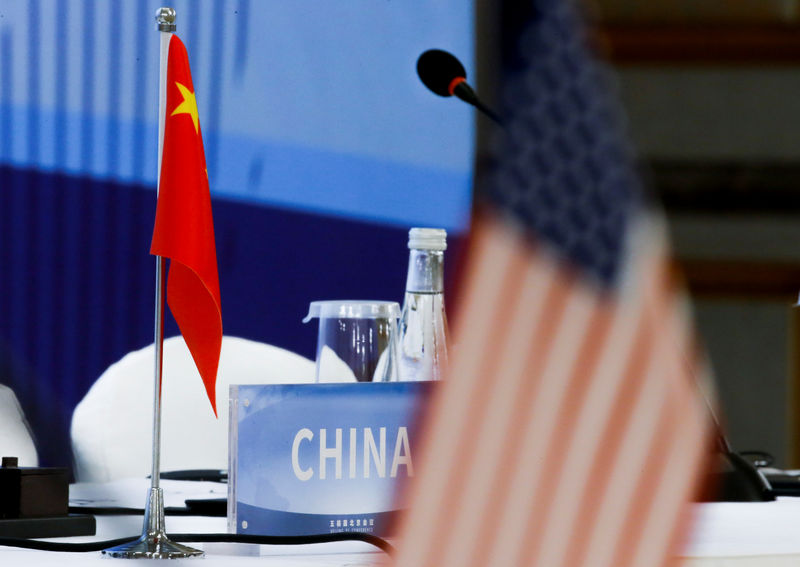By Investing.com staff writers
Investing.com - Stock markets cheered the much-anticipated signing of the phase one trade deal between China and the U.S. But there are many more trade questions that could either take the deal as a model or see it as a warning sign. The EU and the U.S. may be next in the headlines.
Meanwhile, the Federal Reserve is getting applause it may not want, with its repo action catching the attention of those against quantitative easing.
And while the Fed’s Beige Book showed a strong economic recovery continuing, there are always pockets of weakness.
Here are three things that flew under the radar this week.
1 Trade Deal Moving East to West?
The Sino-U.S. trade deal has been signed, putting an end to the hostilities between the two economic powerhouses, at least for now. U.S. President Donald Trump initiated the conflict and is basking in the spotlight surrounding this outcome. Should the EU now expect a similar playbook?
EU Trade Commissioner Phil Hogan stated Thursday that he had a positive exchange of views in Washington with U.S. Trade Representative Robert Lighthizer. He was hoping to persuade the current administration not to impose punitive tariffs on the EU.
The meeting is a step forward in addressing long-standing issues such as a French digital tax and aircraft subsidies, soothing some concerns over a possible escalation in trade tensions between the two hefty trading blocs.
A significant factor that could limit the desire of the U.S. authorities to start another trade dispute this year is the November presidential election,
“The upcoming elections will limit Trump’s risk appetite,” said Nordea analyst Tuuli Koivu, in a research note to investors, “and we expect a flow of small hindering measures between the two economic blocs but not a full-blown trade war.”
But this would probably change if he was reelected.
“Trump has been speaking in favour of protectionism for most of his career, we expect him to be ready to push hard on new trade agreements and if necessary to implement tough measures on China as well as on the EU during his possible second term,” added Koivu.
As far as the other side is concerned, it’s tricky at this point to judge the views of the Democratic Party’s nomination given the candidate has yet to be selected, but the current favorite Joe Biden is seen as being supportive of trade negotiations.
“We expect he would be less aggressive on China than Trump or the left-wing Democrats and especially to promote cooperation with the EU,” said Koivu. “And even if Elisabeth Warren and Bernie Sanders want to reform the global trade system and are more pro-active on topics like workers’ rights, their view would hurt China much more than the EU.”
That said, this view is not universal.
“People are very bullish,” said analysts at MUFG Bank. “They are kind of acting as if Trump is going to be a very different creature when it comes to trade this year.”
“The crusty cake of protectionism that sort of enveloped the global economy is still going to be there.”
2. Traders Cheer Repo Rally Extension
Traders have been fraught with worry for weeks about when and how the Federal Reserve will end efforts to prop up overnight lending markets, which many believe have played an instrumental role in pushing stocks to their current record highs.
But the U.S. central bank indicated this week that it planned to continue its liquidity boosting efforts, known as repurchase-agreement (repo) operations, into mid-February.
Powell has stressed that the Fed's repo program - aimed at keeping the federal funds rate within the 1.50% and 1.75% range - is not quantitative easing.
"Growth of our balance sheet for reserve management purposes should in no way be confused with the large-scale asset purchase programs that we deployed after the financial crisis," Powell said last year.
The Fed has been buying Treasury bills at a pace of $60 billion a month since October to avoid a repeat of the cash crunch in September, when short-term rates spiked 10% sending markets into turmoil.
But traders are not convinced. They see any expansion of the Fed's balance sheet as a form of quantitative easing.
The moves in the market seem to validate that there may be parallels between repo operations and quantitative easing in pushing stocks higher.
Since the Fed started buying T-bills, the S&P 500 has gone up by almost 1% for every 1% increase in the Fed’s balance sheet, Deutsche Bank said last month.
3. The Few Weak Beige Book Spots
The Federal Reserve said in its Beige Book this week that the U.S. economy continued to expand at a modest pace.
That was not surprising, but it gave the market a little more assurance that the Fed would have no reason to raise rates this year.
But there were some outliers.
In the Richmond Fed area “tariff and other trade policy uncertainties continued.”
Hiring and activity was subdued in the New York area, while wages grew just modestly.
In Kansas City “manufacturing activity and sales in the transportation sector continued to decline. Economic activity in the energy and agriculture sectors also remained weak.”
Looking on the plus side was Boston, which seemed to still jump.
“Software and IT services firms cited relatively strong growth; manufacturers and retailers also reported revenue increases from a year earlier. Residential real estate markets saw continued inventory shortages. Labor market tightness persisted. Outlooks were positive.”
